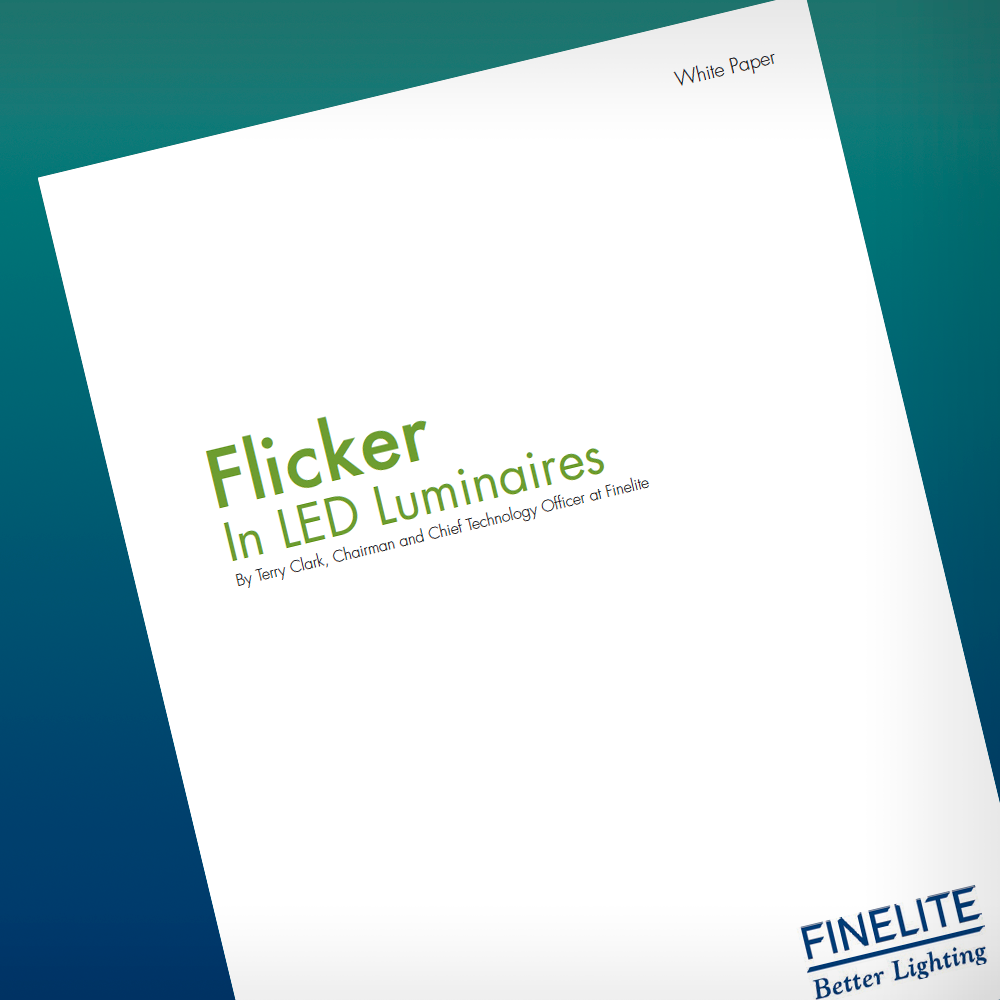
Flicker in LED Luminaires
The goal of this white paper is help you understand the possible effects of flicker on customers and how the type of LED Power Supply used can affect the level of flicker produced by LED luminaires.
Why Does Flicker Matter?
When flicker is perceived by the average observer it can be interpreted simply as annoying and/or distracting. For at-risk observers, such as those sensitive to light, individuals with Autism, and those with photosensitive epilepsy, especially children, flicker under certain conditions may trigger health issues within these populations which include migraines, eyestrain, seizures, and impaired visual performance.
The presence of flicker in LED lighting applications is dependent on the light modulation characteristics of the LED Power Supply, the ambient light conditions, the sensitivity of the individuals using the space, and the tasks performed.
Flicker Definition
The U.S. Department of Energy (DOE) defines flicker as a “variation of light output over time,” and states that “all light sources flicker to some degree.”
Flicker-Related Health Risks

Flicker and LED Power Supplies
There are two types of LED Power Supplies to choose from when specifying LED lighting systems. It is important to understand the technology underlying each type and how it effects the amount of flicker generated in a space.
Pulse Width Modulation (PWM) LED Power
Supplies dim the light by rapidly switching the current on and off to the LEDs. The ratio of time on to time off determines the perceived brightness of the LED. PWM LED Power Supplies may not exhibit objectionable flicker when current is at 100%, but when dimmed, flicker may become apparent.
Constant Current Reduction (CCR) LED Power
Supplies dim the light by reducing the amount of current delivered to the LED. The LED does not turn on and off. CCR LED Power Supplies may exhibit a ripple on the output current signal.
Recommended Practices
![]()
If it is desired to limit the possible adverse biological effects of flicker, then flicker Modulation (%) should satisfy the following goals:
- Below 90 Hz, Modulation (%) is less than 0.025 x frequency
- Between 90 Hz and 1250 Hz, Modulation (%) is below 0.08 x frequency
- Above 1250 Hz, there is not restriction on Modulation (%)
![]()
All electric lights (except decorative lights, emergency lights and other special-purpose lighting) used in regularly occupied spaces meet at least one of the following requirements for flicker:
- A minimum frequency of 90 Hz at all 10% light output intervals from 10% to 100% light output
- LED products with a “low risk” level of flicker (light modulation) of less than 5%, especially below 90 Hz operation as defined by IEEE SA 1789-2015
Finelite's Flicker-Free Approach
Finelite supports both IEEE SA 1789-2015 and WELL by utilizing constant current reduction dimming drivers as standard and are designed to operate at frequencies above 1250Hz to limit possible adverse biological effects. All our luminaires and components operate in the IEEE “NOEL” (No Observable Effect Level) specification range at all times.
Revised Dec 6, 2023.